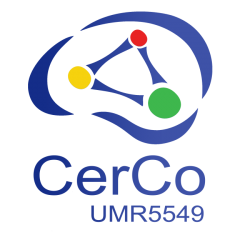Head : Pier-Giorgio ZANONE
A key tenet sustaining the AA+ team scientific project is the primordial role of action in learning most human capacities, including higher cognitive/brain functions (from perception to social skills to emotions), irrespective of the time scale on which the acquisition process unfolds. It comes then to no surprise that this stance has been a founding principle of several theories in (developmental) psychology, J. Piaget or J.J. Gibson being on the forefront. A second tenet is that even though learning relies on individual experience indeed―to which most experimental work has been dedicated ―, social interaction is at least a facilitator for learning, if not a pivotal contributor. Again, such an assumption has grounded theories of leading scientists in psychology and education, such as Wallon or Vigostky. The AA+ team brings together the competences of researchers versed into experimental and developmental psychology, movement, cognitive and brain sciences, in order to use both action and social interaction as a window to understand learning and as a tool for facilitating and improving it. Thus, the aim of team AA+’s research, profoundly multidisciplinary, is not only to advance basic knowledge on learning and action, but also to open new avenues for teaching, training and education. Currently, AA+ team pursues three main lines of research. A first project explores the dynamics involved in learning handwriting action. A second project examines the oscillatory dynamics involved in a joint action where two agents learn to interact. Finally a third project focuses on the upstream processes of action control, the executive functions, by exploring how executive functioning can be trained and how social interaction might play a pivotal role in this training.
Research themes :
Permanent research staff :
-
 Chlöé FARRER-PUJOL (CNRS researcher)
Chlöé FARRER-PUJOL (CNRS researcher) -
 Raoul HUYS (CNRS researcher)
Raoul HUYS (CNRS researcher) -
 Pier-Giorgio Zanone (Professor) – team leader
Pier-Giorgio Zanone (Professor) – team leader
Doctorants :
- Nicolas ADAM
- Mario HERVAULT
Representative publications:
- Chambon V, Domenech P, Jacquet P, Barbalat G, Bouton S, Pacherie E, Koechlin E &Farrer C. 2017. Neural coding of prior expectations in hierarchical intention inference. Scientific Report, 28;7(1):1278.
- Hamaoui, A., Hassaïne, M., Watier, B., & Zanone, P.G. (2016). Effect of seat and table top slope on the biomechanical stress sustained by the musculo-skeletal system. Gait and Posture, 43, 48–53.
- Hervault M, Huys R, Farrer C, Buisson JC & Zanone PG (2019) Cancelling discrete and stopping ongoing rhythmic movements: Do they involve the same process of motor inhibition? Human Movement Science, 61, 296-306.
- Huys R, Jirsa VK, Darohkan Z, Valentiniene S, & Roland PE (2016). Visually evoked spiking evolves while spontaneous ongoing dynamics persists. Frontiers System Neuroscience 9:183.
- Huys, R., Kolodziej, A., Lagarde, J., Farrer, C., Darmana, R., & Zanone, P.G. (2018) Individual and dyadic rope turning as a window into social coordination. Human Movement Science, 58, 55-68.
- Knol H, Huys R, Sarrazin J-C, Spiegler A, Jirsa VK (2017). Ebbinghaus figures that deceive the eye do not necessarily deceive the hand. Scientific Reports 6: 3111.
- Kostrubiec, V., Huys, R., & Zanone, P.G. (2018). Joint dyadic action: error correction by two persons works better than by one alone. Human Movement Science, 61, 1-18.
- Vernooij CA, Rao G, Perdikis, D, Huys R, Jirsa VK, Temprado JJ (2016) Functional coordination of muscles underlying changes in behavioural dynamics. Scientific Reports 6: 27759.
- de Vries, S., Huys, R. & Zanone, P.G. (2018). Keeping your eye on the target: Eye–hand coordi-nation in a repetitive Fitts’ task. Experimental Brain Research, 236(10), 1-10.
